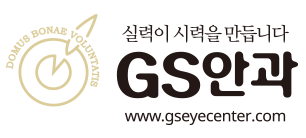ICL Surgery – Frequently Asked Questions (FAQs)
1. What is ICL surgery?
ICL stands for Implantable Collamer Lens. It’s a vision correction procedure where a soft, biocompatible lens is implanted inside the eye to correct nearsightedness and astigmatism, offering a long-term alternative to glasses and contacts.
2. How is ICL different from LASIK?
ICL doesn’t use a laser or reshape your cornea. Instead, it adds a lens inside your eye to correct your vision. It's also reversible, making it a great option for patients with thin corneas or dry eyes who are not ideal candidates for LASIK.
3. Is the procedure painful?
No. Numbing eye drops are used during the procedure, so you won’t feel pain. Some patients may feel slight pressure, but the entire process is typically comfortable and quick — about 15–20 minutes per eye.
4. How long does it take to recover?
Most patients notice improved vision within 24 hours. Normal activities can usually be resumed in 1–2 days, though full visual stabilization may take a few weeks.
5. Is ICL surgery permanent?
Yes, but it’s also reversible. The lens is designed to stay in your eye permanently, but it can be removed or replaced if needed, offering long-term flexibility.
6. Am I a candidate for ICL?
You may be a good candidate if you:
- Are over 21 years old
- Have stable vision for at least one year
- Have moderate to severe nearsightedness (with or without astigmatism)
- Are not suitable for LASIK or LASEK due to thin corneas or dry eyes
7. Does ICL correct astigmatism?
Yes. There are Toric ICL lenses specifically designed to correct astigmatism as well as nearsightedness.
8. Will I still need glasses after ICL surgery?
Most patients achieve excellent vision without glasses or contacts. However, reading glasses may still be needed later in life due to natural aging (presbyopia).
9. Are there any side effects or risks?
As with any surgery, there are minor risks such as under- or over-correction, glare or halos at night, or the rare need to reposition the lens. Your doctor will discuss these in detail during your consultation.
10. How much does ICL surgery cost?
In Korea, ICL surgery typically costs ₩3,500,000–₩5,500,000 per eye, depending on the clinic, lens type, and post-op care package. Some clinics offer flexible payment plans.
Still have a question?
Title or Question
Describe the item or answer the question so that site visitors who are interested get more information. You can emphasize this text with bullets, italics or bold, and add links.Title or Question
Describe the item or answer the question so that site visitors who are interested get more information. You can emphasize this text with bullets, italics or bold, and add links.Title or Question
Describe the item or answer the question so that site visitors who are interested get more information. You can emphasize this text with bullets, italics or bold, and add links.Title or Question
Describe the item or answer the question so that site visitors who are interested get more information. You can emphasize this text with bullets, italics or bold, and add links.Title or Question
Describe the item or answer the question so that site visitors who are interested get more information. You can emphasize this text with bullets, italics or bold, and add links.
What to Expect Before, During, and After Your ICL Surgery
Understanding the timeline and recovery process for EVO ICL can help you feel more confident and prepared for your journey to better vision. Here’s a step-by-step overview of how much time you’ll need to plan and what aftercare involves.
How Long Does the Procedure Take?
- Surgery Time: The EVO ICL procedure takes approximately 15–20 minutes per eye.
- Same-Day Outpatient: It is performed as an outpatient procedure, meaning you’ll go home the same day — no overnight stay required.
- Minimal Downtime: Most patients return to normal daily activities within 1–2 days after surgery.
Aftercare & Recovery Guidelines
Proper aftercare ensures optimal healing and long-term results. Here's what you can expect:
- Immediate Recovery
- Mild sensitivity to light and blurry vision may occur right after the procedure.
- Vision usually improves significantly within 24 hours, and continues to sharpen over several days.
- Post-Op Medications
- You will be prescribed antibiotic and anti-inflammatory eye drops to prevent infection and support healing.
- Eye drops are typically used for a few weeks following the procedure.
- Activity Restrictions
- Avoid rubbing your eyes for the first few days.
- You may need to avoid swimming, saunas, or intense physical activity for about a week.
- Most people can return to work or school the next day, depending on how they feel.
- Follow-Up Appointments
- Your first follow-up is usually scheduled within 24 hours of surgery.
- Additional follow-ups will be arranged to monitor healing and ensure the lens is properly positioned.
Tips for a Smooth Recovery
- Wear sunglasses outdoors to reduce light sensitivity during the first few days.
- Use all prescribed eye drops exactly as directed.
- Keep your hands clean and avoid touching your eyes.
- Attend all follow-up visits, even if you feel fine.
Enjoy Your New Vision
- With minimal downtime and a fast recovery, EVO ICL allows you to return to your routine quickly — but with a whole new outlook. Most patients are amazed by how quickly they can enjoy clear, natural vision without glasses or contacts.











